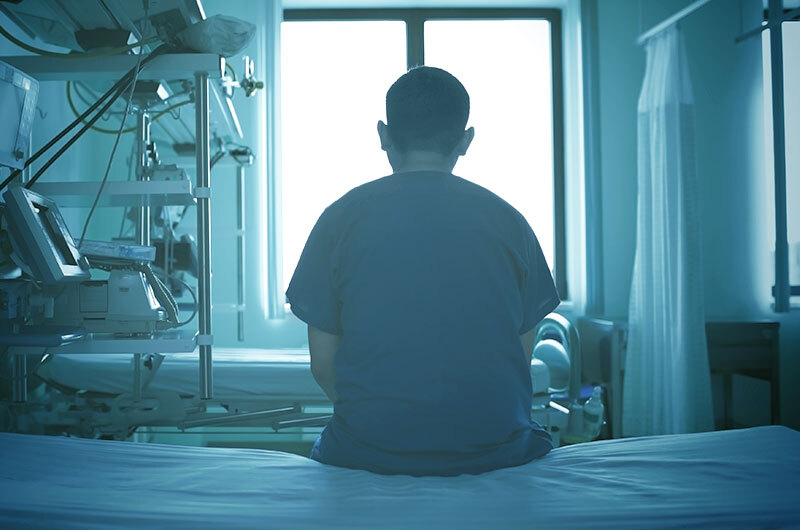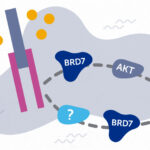Nurses, COVID-19, and PTSD: When it hurts to care

When Boston Children’s Michelle Schuster, MSN, RN, CPHON, inpatient oncology/hematology staff nurse and Patricia Dwyer, PhD, RN, CNOR, nurse scientist, set out to study post-traumatic stress disorder (PTSD) in nurses, they weren’t thinking about COVID-19. The two had been studying PTSD in nurses for almost two years when the pandemic hit.
· PTSD is a growing concern for nurses internationally.
· Exposure to traumatic patient events, lack of organizational support, and poor coping skills increase nurses’ risk.
· The COVID-19 pandemic could take a long-term emotional toll on many nurses.
The health crisis put a magnifying glass up to many of the issues they’d identified as potential sources of trauma for nurses. Physical and emotional demands of nursing rose steeply. Supplies of protective equipment ran low, while clinical uncertainty ran high. Hospitals without strong support systems already in place weren’t able to look after nurses’ emotional well-being.
By pure chance, the Journal of Clinical Nursing published Schuster and Dwyer’s study, Post-traumatic stress disorder in nurses: An integrative review, in May 2020, just as COVID-19 was at a peak in the Northeast. They answer questions about their research below.
Why did you want to study PTSD in nurses?
Michelle Schuster: I started thinking about PTSD and nurses after my first nursing job in Houston. As soon as I came to Boston Children’s, I could feel how much more supportive the environment was here. Nonetheless, I was in a state of nearly constant hyper-arousal, always waiting for something bad to happen. Finally, a therapist suggested my symptoms might be PTSD. It was the first time I realized that nurses could have PTSD.
Patricia Dwyer: I’ve been interested in the emotional toll of nursing for years. When I met Michelle, I realized her project fit perfectly with my research goals and interests. Given what we’ve seen during the COVID-19 pandemic, we couldn’t have chosen a better time to publish.
How has COVID-19 increased nurses’ risk of PTSD?
Dwyer: COVID-19 is repeatedly traumatic for many of the nurses who are providing direct care. They are caring for patients with a mysterious illness, often for extended shifts, and some hospitals may not have resources in place to support them.
It’s part of our job as nurses to be there for dying patients. But with this pandemic, many families haven’t been able to be in the room with their loved ones. They’ve had to say goodbye over FaceTime while nurses stand by. Situations like this take a real emotional toll on nurses.
What signs and symptoms should nurses watch out for?
Schuster: First, it’s important to note that different people can have different reactions to the same event. One nurse might find a patient experience traumatic while another may not. That said, there are four main PTSD symptoms to be aware of:
- Intrusive thoughts or reexperiencing the event. This includes thinking about the event at home and reexperiencing it when you walk into the room where it took place.
- Avoiding situations that serve as reminders of the event. Sadly, this leads many nurses to leave the profession. Others avoid taking care of certain kinds patients that might trigger bad memories.
- Negative changes in thought and feelings. A nurse with PTSD might feel angry or depressed or have a harder time relating to their family and friends.
- Hyperarousal. This is a constant feeling of being on edge, of feeling threatened when there’s no actual danger present.
You pointed out that nurses cope differently with the demands of nursing. Are there particularly effective coping strategies?
Dwyer: Research has shown that nurses who take an active, problem-solving approach to stress are less likely to develop PTSD. Reaching out for support when they need it is another positive coping strategy. On the other hand, those who deny their feelings, blame themselves, or turn to alcohol to cope with their feelings are far more likely to experience long-term effects of trauma.
What are the next steps for your research?
Schuster: Now that PTSD in nurses has gained recognition, we need to understand how to create more supportive work environments so nurses can be their best selves both on and off the job. The next steps for my research through the Nursing Science Fellowship program is to examine PTSD specifically in pediatric oncology nurses across the country. We’ll be looking at the relationship between nurses’ psychological capabilities, workplace social supports, and PTSD symptoms in inpatient pediatric oncology nurses.
Dwyer: We are very lucky at Boston Children’s. The hospital is constantly looking at ways it can support nurses and ways to improve. In talking to nurses from around the country and the world, we’ve realized how unusual this is — we want to help change that.
Learn more about Boston Children’s response to COVID-19 and read more stories on coronavirus research and clinical care at the hospital.
Related Posts :
-

BRD7 research points to alternative insulin signaling pathway
Bromodomain-containing protein 7 (BRD7) was initially identified as a tumor suppressor, but further research has shown it has a broader role ...
-

When diagnosis is just the first step: The Brain Gene Registry
Through advances in genetic sequencing, many children with rare, unidentified neurodevelopmental disorders are finally having their mysteries solved. But are ...
-

Engineered cartilage could turn the tide for patients with osteoarthritis
About one in seven adults live with degenerative joint disease, also known as osteoarthritis (OA). In recent years, as anterior ...
-

Surgery beats sclerotherapy for rectal prolapse in children ages 5 and older
Rectal prolapse — the protrusion of the lining of a child’s rectum through the anal sphincter — can occur for many ...





